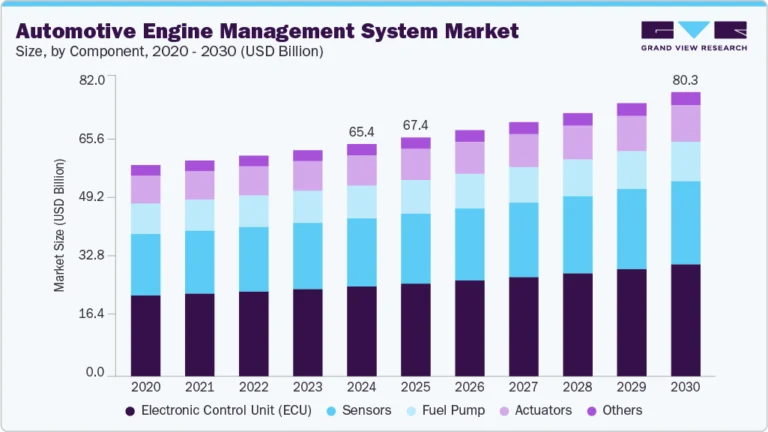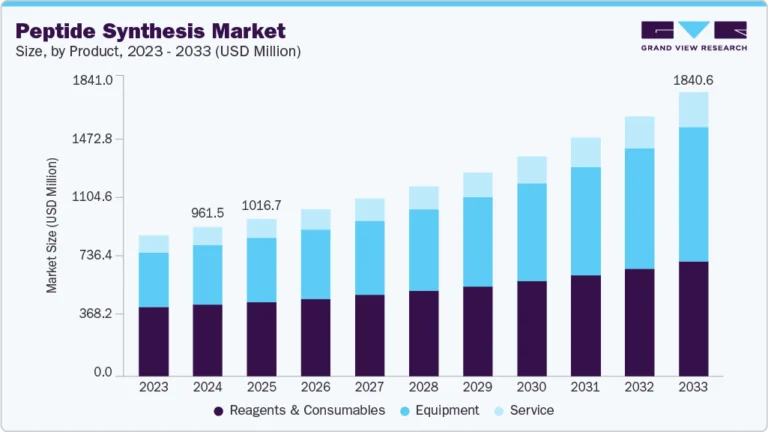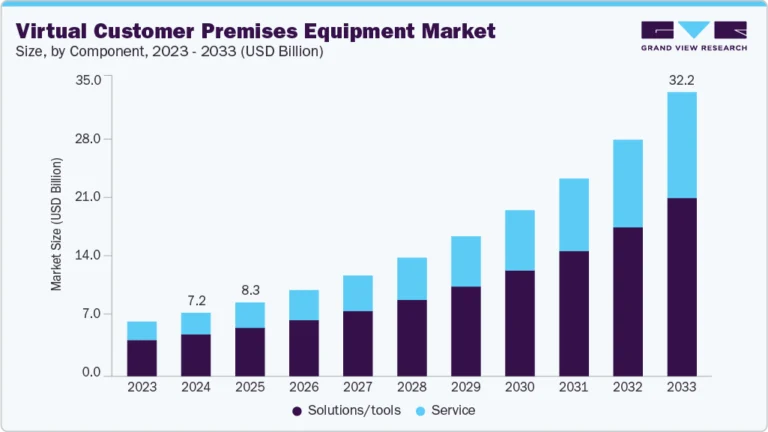Utility Communication Market Size, Share & Trends Analysis growing at a CAGR of 5.1% from 2025 to 2033

The global utility communication market size was estimated at USD 26.29 billion in 2024, and is projected to reach USD 39.90 billion by 2033, growing at a CAGR of 5.1% from 2025 to 2033. The market has been driven by the global push toward grid modernization, growing demand for operational efficiency, and increasing integration of renewable energy sources.
Key Market Trends & Insights
- North America utility communication market accounted for a 36.1% share of the overall market in 2024.
- In 2024, the U.S. utility communication market held a dominant position in the North America region.
- By technology, the wired segment accounted for the largest share of 58.4% in 2024.
- By component, the hardware segment held the largest market share in 2024.
- By utility, the public segment dominated the market with the largest share in 2024.
Market Size & Forecast
- 2024 Market Size: USD 26.29 Billion
- 2033 Projected Market Size: USD 39.90 Billion
- CAGR (2025-2033): 5.1%
- North America: Largest market in 2024
- Asia Pacific: Fastest market
Request a free sample copy or view report summary: https://www.grandviewresearch.com/industry-analysis/utility-communication-market-report/request/rs1
Utilities have been compelled to adopt advanced communication systems to enable real-time monitoring, remote asset management, and enhanced customer engagement. The proliferation of distributed energy resources (DERs), electric vehicles (EVs), and smart metering infrastructure has intensified the need for robust, secure, and scalable communication networks across electric, gas, and water utilities.
Technological advancements have reshaped the market landscape, with significant emphasis placed on the convergence of wired and wireless communication solutions. Adoption of technologies such as RF mesh, fiber optics, private LTE, and increasingly, 5G, has been accelerated to support two-way communication, high-speed data transmission, and low-latency grid applications. Integration of IoT, edge computing, and AI-based analytics has also been prioritized, enabling predictive maintenance, fault detection, and real-time decision-making across utility networks.
Substantial investments have been observed across regions, particularly in smart grid and AMI projects, with public and private funding increasingly allocated to infrastructure upgrades. Leading utilities and governments have allocated multi-billion-dollar budgets to replace aging infrastructure and deploy intelligent communication systems. Partnerships between utilities and technology providers have been strengthened to co-develop customized solutions that address specific operational challenges while enhancing system resilience.
The regulatory landscape has continued to evolve in favor of utility communication system deployment, driven by national energy efficiency mandates, cybersecurity guidelines, and sustainability goals. In markets such as North America and Europe, regulatory bodies have mandated the rollout of smart meters and grid modernization initiatives. International standards for data interoperability, network security, and communication protocols have been established to ensure seamless integration and system compatibility across diverse utility ecosystems.
However, several restraints have hindered the widespread adoption of utility communications technologies. High upfront costs, complex system integration, and legacy infrastructure challenges have slowed deployment, particularly in developing markets. Concerns around data privacy, cyber threats, and the lack of standardization in emerging regions have further constrained market scalability. In addition, regulatory uncertainties in certain geographies have delayed investment decisions and slowed the pace of digital transformation in the utility sector.
Technology Insights
The wired segment accounted for the largest share of 58.4% in 2024. The need for highly reliable, low-latency communication fuels the growth of the market. Wired technologies, especially fiber optics and Ethernet, offer stable and uninterrupted connectivity that is critical for real-time applications such as SCADA (Supervisory Control and Data Acquisition), substation automation, and grid protection systems. Utilities rely on these wired systems to ensure accurate data transmission and minimal communication delay, particularly in mission-critical infrastructure, where any disruption can lead to service outages or operational risks.






